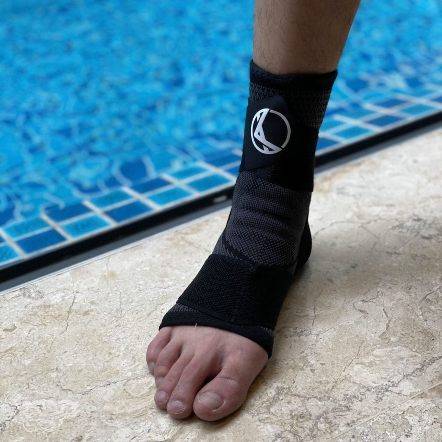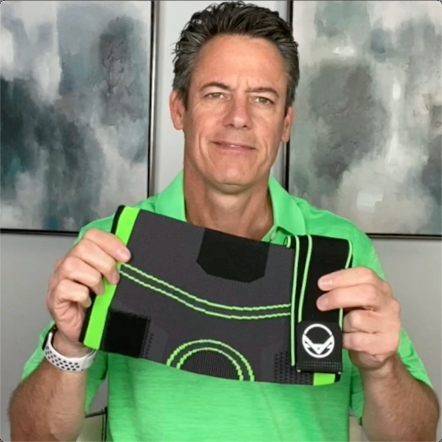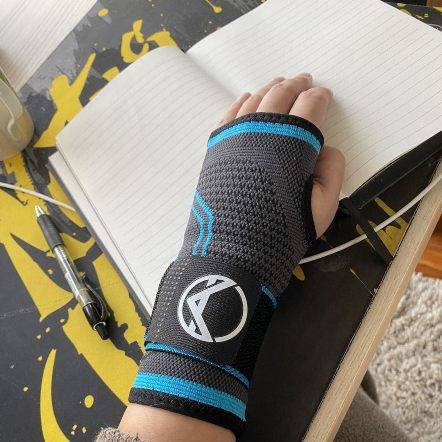
February 28, 2024 | 3 Mins Read
TABLE OF CONTENTS
Back braces have evolved as a preferred non-invasive intervention for many pain patients suffering from a range of back pain conditions. So, how does a back brace work? Essentially, it acts as an external stabilizer directly surrounding the spine, promoting proper posture and providing the function demanded by the spinal musculature.
Check out the Koprez back support brace, which has been designed specifically for this purpose. This device consists of two flexible straps that wrap around the torso and waist area and provide adjustable support to the entire spine. It also features removable foam pads for additional lumbar support, allowing you to customize your experience as needed.

Ever wondered how a back brace alleviates discomfort? These braces, both soft plastic and hard plastic metal types, offer support to the back muscles and the spinal column. Their design often minimizes unnecessary movement, thus preventing further injury and promoting healing.
Ever wondered how a back brace alleviates discomfort? These braces, both soft plastic and hard plastic metal types, offer support to the back muscles and the spinal column. Their design often minimizes unnecessary movement, thus preventing further injury and promoting healing.
For many pain patients, back pain is not just an inconvenience; it's life-altering. Back braces offer relief by distributing the weight the lower lumbar spine carries, thus offloading stress and reducing pressure on inflamed joints or soft tissue. With less pressure, pain often diminishes. This effect becomes more noticeable when it comes to conditions like degenerative disc disease or spinal stenosis.
While movement is crucial for the body, there are times after acute injury or spinal surgery when restricting motion becomes essential. Here, a back brace snugly wraps around to compress the core musculature, limiting motion and promoting healing. This also gives you protection against involuntary spasms and additional strain.
Think of back braces as an external stabilizer. They are not just for those with severe back pain. Even if you've just tweaked your back during an intense workout, a back brace can provide support, ensuring that the spinal musculature, including the abdominal muscles, remains stabilized. This is especially pertinent for chronic conditions like spondylolisthesis.
By reducing pain, curtailing unnecessary movement, and acting as a comprehensive treatment plan alongside physical therapy and manual therapy, the brace offers an environment conducive to recovery. Especially after back surgery or an acute sprain, it aids soft tissue to heal efficiently.
Back braces have long stood as a conventional treatment in the orthopedic realm, offering patients a non-invasive way to manage various spinal conditions. Renowned for their ability to provide support and stabilization, back braces play a pivotal role in many treatment plans, often reducing the need for surgical interventions. Orthopedics and medical professionals frequently prescribe back braces as they can alleviate pain, correct postural imbalances, and assist in the rehabilitation of spinal injuries. Numerous studies have shown the following conditions to benefit from back braces:
Back pain often occurs due to muscle strains, ligament sprains, or imbalances in the spine, especially after engaging in heavy lifting or strenuous activity.
Scoliosis is a medical condition where the spine curves sideways, deviating from its normal straight alignment. Depending on the severity and type of scoliosis, a back brace may be recommended, especially for adolescents with progressive curves.
Degenerative disc disease is characterized by the breakdown of intervertebral discs, while spinal stenosis refers to the narrowing of the spinal canal. Both conditions can cause significant pain and discomfort due to nerve compression.
Spondylolisthesis is a condition where one vertebra slips forward over the one below it. This misalignment can lead to pain, nerve compression, and reduced mobility.
After undergoing spinal surgery, the body requires time and support to heal properly and regain its strength.
Vertebral compression fractures occur when a bone in the spine collapses, often due to osteoporosis or trauma. These fractures can result in acute pain, decreased height, and a hunched-forward posture.
Osteoarthritis of the spine, often termed spondylosis, is a degenerative joint disease where the cartilage between vertebrae wears down over time. This can lead to bone spurs, pain, and stiffness in the back.
A herniated disc, often referred to as a slipped or ruptured disc, happens when the soft jelly-like center of an intervertebral disc pushes out through a tear in its tough exterior. This can irritate nearby nerves, leading to pain, numbness, or weakness.

The time it takes for a back brace to "work" depends on the specific reason it's being used. Here's a breakdown:
The human spine is a complex structure, and when it comes to its care and support, various myths have cropped up, especially around the use of back braces. Here, we debunk some of the most prevalent misconceptions:
Truth: Back braces are designed to provide support and stability to the spinal structures and surrounding muscles. If used correctly, they can aid in alignment and assist the core muscles in maintaining proper posture.
Truth: Age is not the exclusive criteria for needing a back brace. While it's true that the elderly might require them due to age-associated degenerative changes, younger individuals also benefit from braces. Sports injuries, postural problems from extended computer use, or conditions like scoliosis can affect people of all ages. Back braces cater to a wide age range, providing necessary support and facilitating recovery across the spectrum.
Truth: Contrary to this myth, back braces are designed to promote proper posture and biomechanics. What's vital is that users don't become overly reliant on them and continue to strengthen their core muscles through appropriate exercises.
Back braces can indeed offer relief from pain, support spinal alignment, and restrict harmful movements, especially in cases of chronic back pain, injuries, or post-operative recovery. However, they are not a universal solution to all back pain problems.
Navigating the world of back braces can initially seem overwhelming due to the myriad of options available. Broadly speaking, back braces fall into two primary categories: orthopedic braces, designed for medical and rehabilitative purposes, and general support braces, often intended for everyday use or specific activities.
Orthopedic braces are typically prescribed by medical professionals for conditions like scoliosis, post-operative recovery, or vertebral fractures. These braces are engineered to address specific medical conditions and often have design features that cater to particular spinal issues.
On the other hand, general support braces are more accessible and are commonly used by individuals seeking relief from minor back pains, those looking to improve posture, or workers engaging in heavy lifting. These braces provide support, reduce muscle strain, and can be especially beneficial during physical activities.
When choosing the right back brace:
Looking for a back support brace? With myriad options at your fingertips, why should the Koprez Back Support Brace be your top choice? Here are the reasons that stand out:
Author

Claire Evans worked as the content marketing manager at Koprez. Claire combined a background of writing and editing, marketing, and patient education to best serve consumers, fitness enthusiasts, athletes, and anyone who relies on the Koprez brand for helpful information.
Koprez® Featured Products


"I sprain my wrist super often, so I decided to try out this sleeve. This is game-changing! I've been using it for a while now, and my wrists feel amazing. I haven't gotten in any injuries since using it too. It just makes my wrists feel so supported."
Alexis A.


"Use this for my boxing training. It is a very comfortable brace and does not move out of position during skipping ropes and sparring sessions. I use it while running too. Probably the best brace I've purchased throughout the years. It is very flexible. Makes me look like a pro! :)"
Samuel L.


"I've just got back to running after a couple of years of being plagued by injury. These compressions socks are helping give me peace of mind while I build up my distance again. They are the perfect level of compression, super comfy, and very high quality. Feel great while on a run, and looks great in the orange colour I have!"
Dave R.


"I have a weak ankle, and the Koprez ankle sleeve has been a lifesaver. Wear it every day. Super breathable and comfortable. Like wearing a cool sporty looking sock!"
James F.


"This is the best knee sleeve I've ever tried. It's now a must-have for all my exercises. A few years ago, I had an accident that damaged my knees, but with Koprez I can be active again with no knee pains at all. It's been truly amazing!"
Alex M.


"One of the best purchases I've ever made. It fits your legs all the way from top to bottom, great snug fit, gives you support and definitely helps during rehab and training."
Rafael A.


"I had a minor elbow injury, and Koprez sleeve was super supportive and definitely helped me recover faster. I still use the sleeve to prevent further injury. So far, so good. Very comfortable and does not feel hot at all. Highly recommend!"
Corey B.


"It's really been a game-changer for me. It allows me to exercise a lot longer than I used to. Now my knees don't hurt, and they're not uncomfortable at all."
Mike P.


"Great product!!"
Harold


"I have carpal tunnel, and this brace has helped me work pain-free. Love the materials, and I can feel my wrists slowly getting better, even when I don't wear them!"
Christopher J.


"I wanted to try out these sleeves to improve my squats and deadlift in the gym without worrying about injuring my knees. They stayed up throughout the entire gym session, and my knees feel super supported. Now I can do what I love for years to come. "
Corbin C.